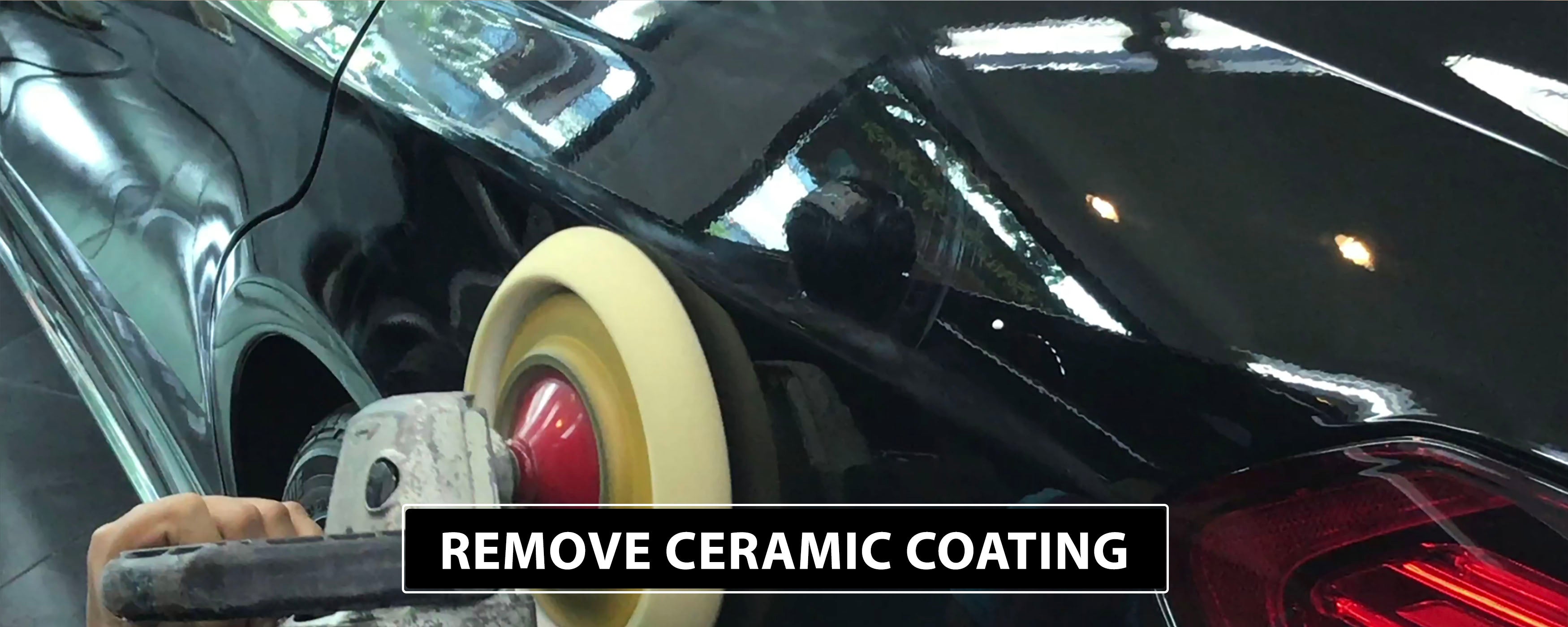FREE US SHIPPING ON ORDERS $75+ (LOWER 48 STATES)
FREE DETAILING ADVICE +1-877-838-2672

Ceramic coatings are among some of the best products for protecting your vehicle’s painted surface from dirt, road grime, dust, bird droppings, UV rays, acid rain, bugs, and many other harmful elements. While ceramic coatings offer long-lasting protection, they don’t last forever and will eventually break down and often require removal due to several reasons. However, the removal of ceramic coating can be a delicate process and should be done the right way to prevent damaging your vehicle’s paint or clearcoat. In some cases, it is best to leave ceramic coating removal to a professional detailer.
Ceramic coatings, many of the well-known and trusted brands, tend to last for at least a year or more in ideal conditions. However, there are many reasons that you would want to remove a ceramic coating, such as the most popular reasons below.
Preparing your vehicle for ceramic coating removal is essential as you’ll want to remove as many containments as possible that may reside on the surface of your ceramic coating. Doing such will help prevent unnecessary scratching or scuffing of your vehicle’s paint or clearcoat. You can simply prepare the surface by performing a thorough vehicle rinse and decontamination by washing the vehicle and performing a clay bar process. In some instances, simply performing this process will remove a deteriorated or worn ceramic coating.
Pro Tip: You may utilize TopCoat® Spritz® with a quality clay bar, and a TopCoat® MycroPro™ 18 - Ultra Professional Detail Microfiber Towel for the clay bar process.
Surprisingly, the above decontamination process is sometimes enough to remove a deteriorated or worn ceramic coating. However, if the ceramic coating is new or has not started to wear or deteriorate, you may be required to chemically remove the ceramic coating.
Chemically removing a ceramic coating can be a tricky process, and this is where we highly advise you to check with the manufacturer of your ceramic coating for a proper removal process, as many ceramic coatings require certain chemicals for safe removal. Moreover, your clearcoat and paint may be vulnerable to damage if the proper chemical is not used to strip and remove certain ceramic coatings.
Commonly, alkaline products like degreasers or tire cleaners will work to break down the bond of many ceramic coatings. However, again, we strongly recommend that you check with the manufacturer of your ceramic coating for a removal process before proceeding, in addition to asking if certain chemicals are safe for breaking down and removal of the ceramic coating.
For a do-it-yourself (DIY) process, you may utilize common cleaning products like degreasers or even wheel cleaners. We must warn you that the use of such products on your paint is normally not recommended, as damage could occur depending on the type of ceramic coating that is present on your vehicle. Additionally, some degreaser and wheel cleaning products may be highly abrasive and contain rather harsh chemicals. Again, check with the manufacturer of those products.
You will want to perform tests in inconspicuous areas for removal of ceramic coating before applying a recommended chemical to the entire surface of your vehicle’s paint. Usually, a dilution of a degreaser or wheel cleaner product diluted 5:1 with water will do the trick, spraying the surface and then applying light pressure to the surface using a clean microfiber cloth. If you apply the mixture, make sure you do not leave it on the surface for long. Additionally, it is essential that you fully remove the applied mixture by pressure washing the surface, but DO NOT use high pressure or a narrow-angle nozzle.
Once you have performed the removal process, you may then test the area to see if the ceramic coating has been removed. One way of doing this is to spray water onto the surface to see if it beads or sheets off. If it beads up, you may still have a ceramic coating on the surface.
Professional detailers will commonly polish off a ceramic coating, which requires machine polishing. Usually, detailers will analyze the coating for high spots and abnormalities. They will attack those areas accordingly with either a wet-sanding process or polish using an appropriate compound and pad to basically “cut” the surface to remove a ceramic coating completely.
The polishing process should be left to professionals as damage to the paint may quickly occur if the proper polishing compound or wet sanding process is not used.

We want you to be 100% satisfied with everything you buy from TopCoat. And if you’re not entirely happy with your purchase we will refund your money in full, or exchange the goods. All we ask is that you contact our customer services and then return the products back to us.